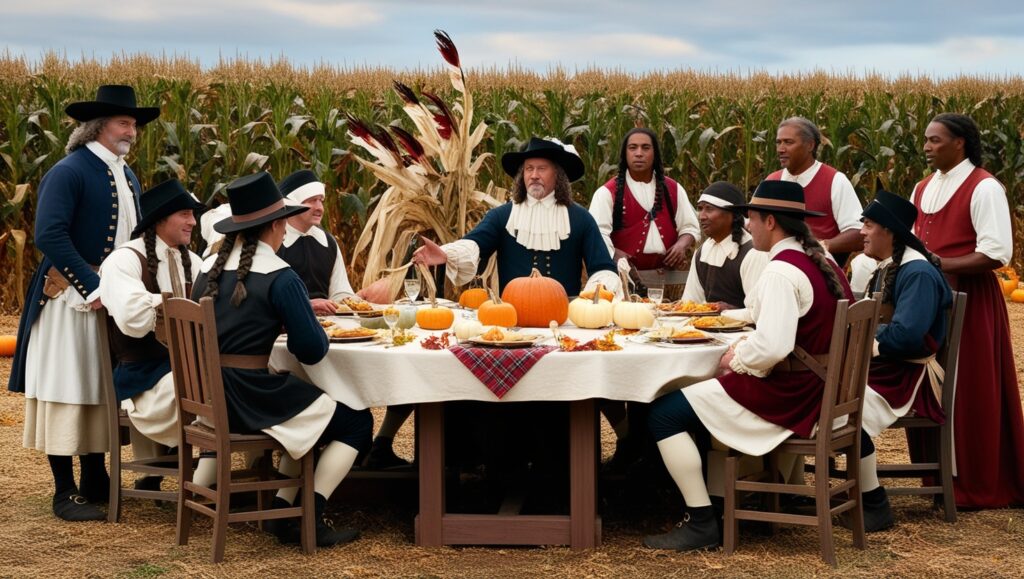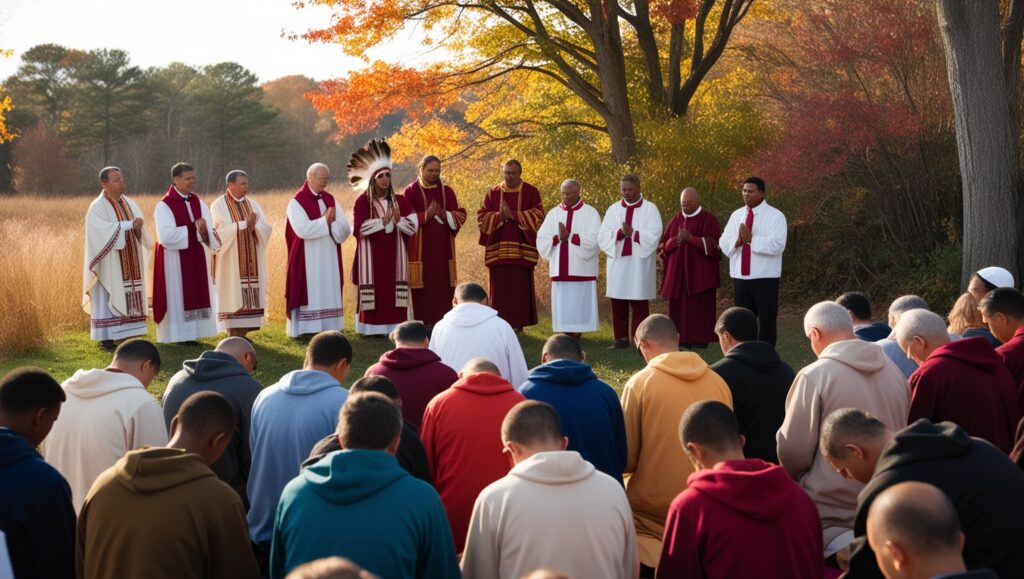
The history of Thanksgiving is a fascinating tale that spans centuries, touching on themes of gratitude, survival, and unity.
While many recognize Thanksgiving as a day of feasting and family gatherings, its origins are rooted in a profound historical context. This article delves deep into the history of Thanksgiving, exploring how it has evolved from a harvest celebration to a national holiday in the United States.
The Early History of Thanksgiving: The First Feast

The history of Thanksgiving dates back to 1621, when the Pilgrims, English settlers seeking religious freedom, celebrated their first successful harvest in the New World.
This event is often referred to as the “First Thanksgiving,” though similar harvest festivals had long been part of many cultures. The Pilgrims invited the Wampanoag tribe, who had helped them survive their first harsh winter by teaching them agricultural practices, to join in the feast.
This three-day event, which laid the foundation for the modern history of Thanksgiving, was not an official holiday but rather a spontaneous celebration of survival and cooperation.
The Pilgrims and the Wampanoag shared a meal featuring the crops and game available to them, and this gathering marked a moment of unity between the two groups.
Religious and Cultural Roots in the History of Thanksgiving

While the history of Thanksgiving is often told through the lens of the Pilgrims’ experiences, it’s essential to note that giving thanks was a common practice among both European settlers and Native Americans. The Pilgrims, as devout Puritans, saw their harvest as a blessing from God and offered thanks through prayers and feasting. Meanwhile, the Wampanoag people had their own traditions of giving thanks to the earth for its bounty. These shared spiritual practices laid the groundwork for the cultural significance of Thanksgiving in American history.
The Evolution of the History of Thanksgiving

As time passed, the history of Thanksgiving evolved beyond that first feast. Throughout the 17th and 18th centuries, Thanksgiving was celebrated sporadically, often as a religious observance or a day of fasting and prayer.
Various colonies and states declared days of thanksgiving, but it wasn’t yet a national holiday. It was President George Washington who, in 1789, declared the first national day of Thanksgiving, recognizing the country’s newfound independence and unity under the Constitution.
Abraham Lincoln and the Nationalization of Thanksgiving
The most significant turning point in the history of Thanksgiving came in 1863, when President Abraham Lincoln proclaimed Thanksgiving a national holiday. His decision was influenced by Sarah Josepha Hale, a prominent writer who had campaigned for a national Thanksgiving holiday for decades.
Lincoln’s proclamation came in the midst of the Civil War, and he hoped the holiday would help unify a divided nation. He designated the last Thursday of November as a day for Americans to give thanks.
The history of Thanksgiving as a national holiday solidified in the late 19th and early 20th centuries, with traditions such as turkey dinners and family gatherings becoming central to the celebration. The holiday became a time for Americans to reflect on their blessings and come together with loved ones.
The Modern History of Thanksgiving and Its Traditions

As the history of Thanksgiving continued to unfold, so did the traditions associated with it. In the early 20th century, Thanksgiving began to take on the form that we recognize today.
Thanksgiving parades, such as the Macy’s Thanksgiving Day Parade, became a staple in cities across the United States, drawing millions of spectators. Football games, a relatively modern addition to the history of Thanksgiving, became an integral part of the holiday for many families.
Despite its joyful celebrations, the history of Thanksgiving also prompts reflection on the complex relationship between European settlers and Native Americans.
For some, Thanksgiving serves as a reminder of the hardships and injustices faced by Indigenous peoples following colonization. This more nuanced understanding of the holiday encourages a thoughtful approach to how we commemorate the history of Thanksgiving.
The History of Thanksgiving Around the World
Though often seen as a uniquely American holiday, the history of Thanksgiving has parallels in other countries. In Canada, Thanksgiving is celebrated on the second Monday of October, with a history that also revolves around giving thanks for the harvest.
Similarly, countries like Germany and Japan celebrate harvest festivals that share the themes of gratitude and abundance.
These international celebrations reflect a common thread in human culture: the desire to give thanks for the earth’s bounty and the support of one’s community.
The history of Thanksgiving may be rooted in American soil, but its themes are universally recognized and celebrated.
Thanksgiving in the 21st Century: A Look at Contemporary Traditions

As we look at the modern-day history of Thanksgiving, it’s clear that the holiday has grown to encompass a wide range of traditions. The classic Thanksgiving meal, centered around roast turkey, stuffing, and pumpkin pie, remains a highlight for many.
However, new traditions have emerged, from watching football games to volunteering at local food banks.
In recent years, there has also been an emphasis on giving back as part of the history of Thanksgiving. Many families now use the holiday as an opportunity to support their communities through acts of service, donating food, or spending time at shelters.
This tradition of generosity reinforces the holiday’s core values of gratitude and unity.
Conclusion: The Enduring Legacy of the History of Thanksgiving
The history of Thanksgiving is a rich and complex narrative that has evolved significantly since its origins in 1621. From a simple harvest feast shared between the Pilgrims and the Wampanoag, it has grown into a national holiday that brings families and communities together in a spirit of gratitude. While the ways in which we celebrate may have changed, the central themes of thankfulness, reflection, and unity remain at the heart of the history of Thanksgiving.
As we gather each year to give thanks, it’s important to remember the journey that led to this beloved holiday. The history of Thanksgiving continues to inspire, reminding us of the power of gratitude and the importance of community.
.
Latest Web Stories
Article Source: Wikipedia








Leave a Reply